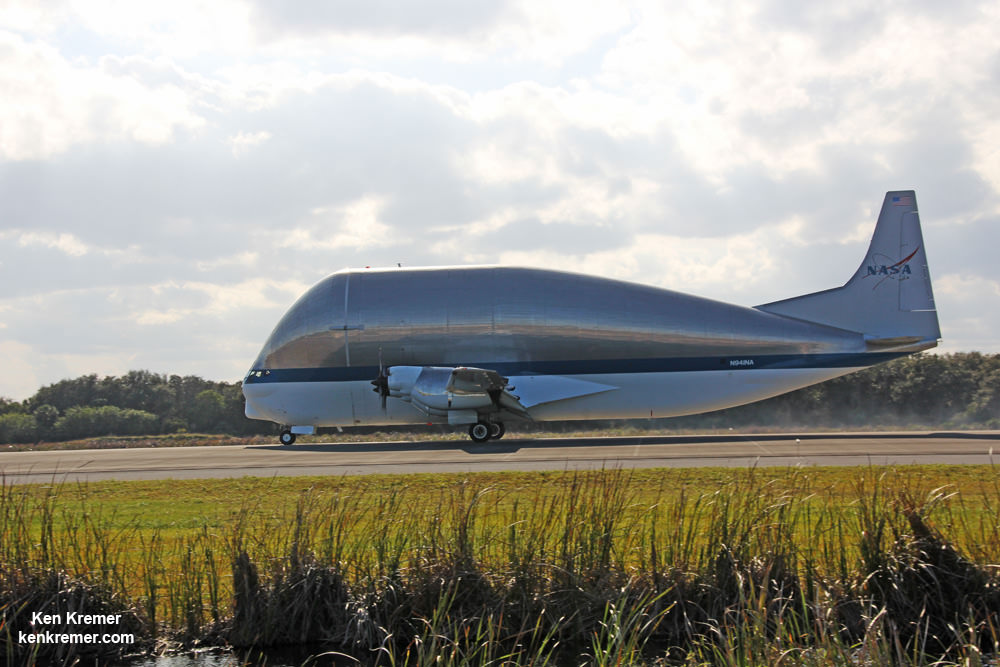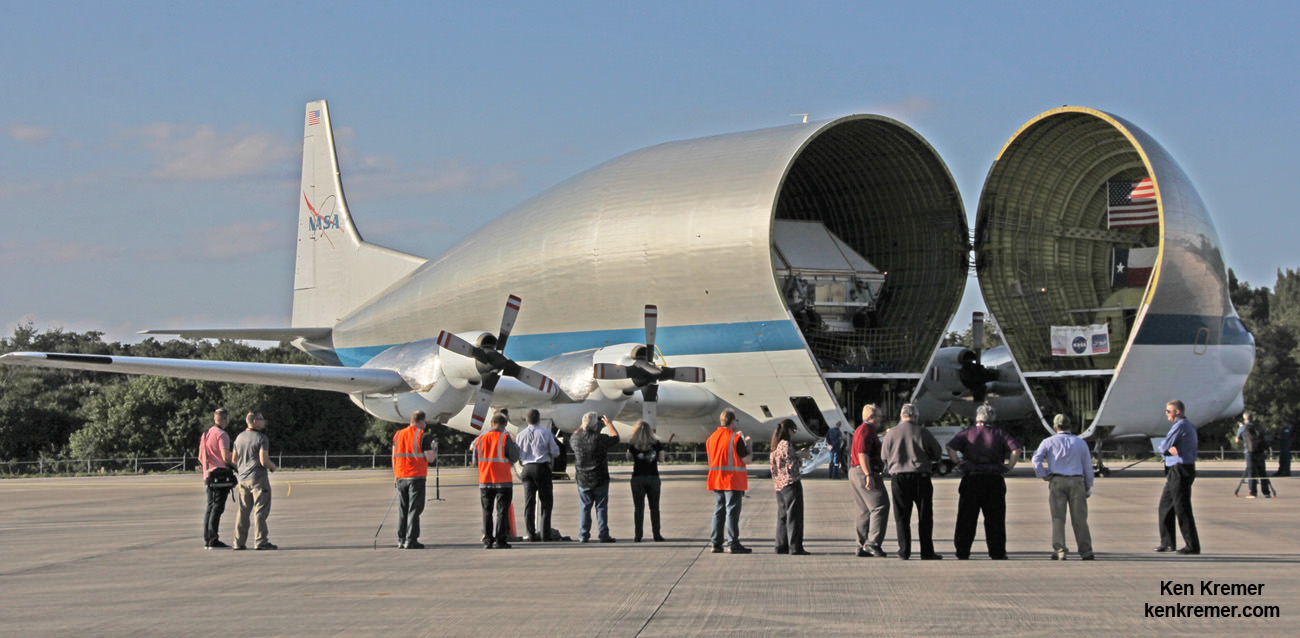
KENNEDY SPACE CENTER – Looking amazingly like a fish flying across the skies high above the Florida space coast, NASA’s unique Super Guppy aircraft loaded with the structural backbone for NASA’s next Orion crew module, swooped in for a landing at the Kennedy Space Center on Monday afternoon, Feb. 1.
The Super Guppy, with the recently completed pressure vessel for the Orion crew module tucked safely inside, touched down gently at about 3:45 p.m. Monday on the same runway at the Shuttle Landing Facility (SLF) where NASA’s now retired orbiters formerly returned from space voyages. The landing strip is now operated by Space Florida.
Orion’s arrival at KSC marks a major milestone on the road to starting NASA’s ‘Journey to Mars’ initiative.
This Lunar Orion vehicle is destined for blastoff to the Moon in 2018 on NASA’s Exploration Mission-1 (EM-1) atop the agency’s mammoth Space Launch System (SLS) rocket.
EM-1 is a ‘proving ground’ mission that will fly an unmanned Orion thousands of miles beyond the Moon, further than any human capable vehicle, and back to Earth, over the course of a three-week mission.
“This is an exciting day for NASA,” NASA Orion program manager Scott Wilson told Universe Today, at the shuttle landing strip after Orion’s safe arrival.
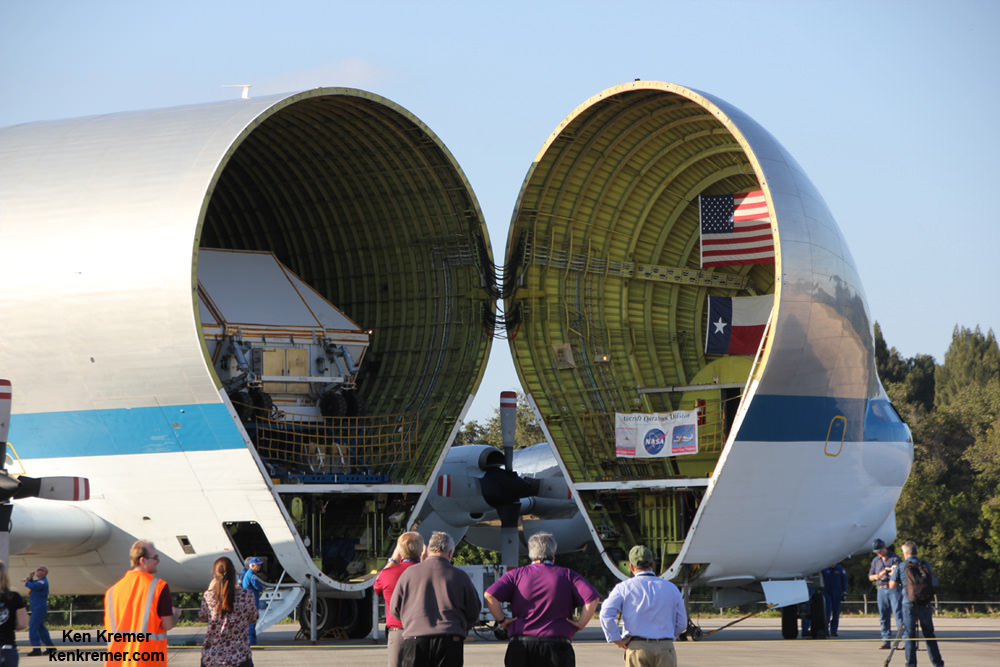
The olive green colored pressure vessel is the spacecraft’s underlying structure on which all of the spacecraft’s systems and subsystems are built and integrated prior to liftoff.
Earlier in the day, Orion departed from NASA’s Michoud Assembly Facility in New Orleans, where the vehicle’s pressure vessel was welded into shape by engineers using an advanced friction-stir welding process.
The crated Orion has packed into the aquatic looking Super Guppy’s cargo compartment that measures 25 feet tall, 25 feet wide and 111 feet long and can carry more than 26 tons.
The EM-1 pressure vessel weighs about 2700 lbs. It stands 10 feet high and is nearly 5 meters in diameter. After installing the thermal protection system, the finished Orion flight capsule will be about 11 feet high and 16.5 feet wide.
The aircraft possesses a unique hinged nose that opens at the front end over 200 degrees. This permits large pieces of cargo, like the voluminous Orion pressure vessel and heat shield, to be easily loaded and unloaded from the front.
Indeed the aircrafts nose was promptly opened less than a hour after touchdown at Kennedy’s SLF to begin the delicate unloading and uncrating process.

The next step is to transport Orion a few miles down the road to KSC’s Neil Armstrong Operation and Checkout Building (O & C). There, engineers from NASA and prime contractor Lockheed Martin will spend the next two years outfitting Orion’s backbone for launch in late 2018.
The team will install all the systems and subsystems for its inaugural flight to the Moon and back.
These systems include the heat shield, thermal protection, propulsion, avionics, computers, plumbing, electrical, life support, parachutes and much more.
The pressure vessel itself is comprised of seven large aluminum pieces that Michoud technicians began welding together in September 2015 using the highly precise state-of-the-art process called friction-stir welding.
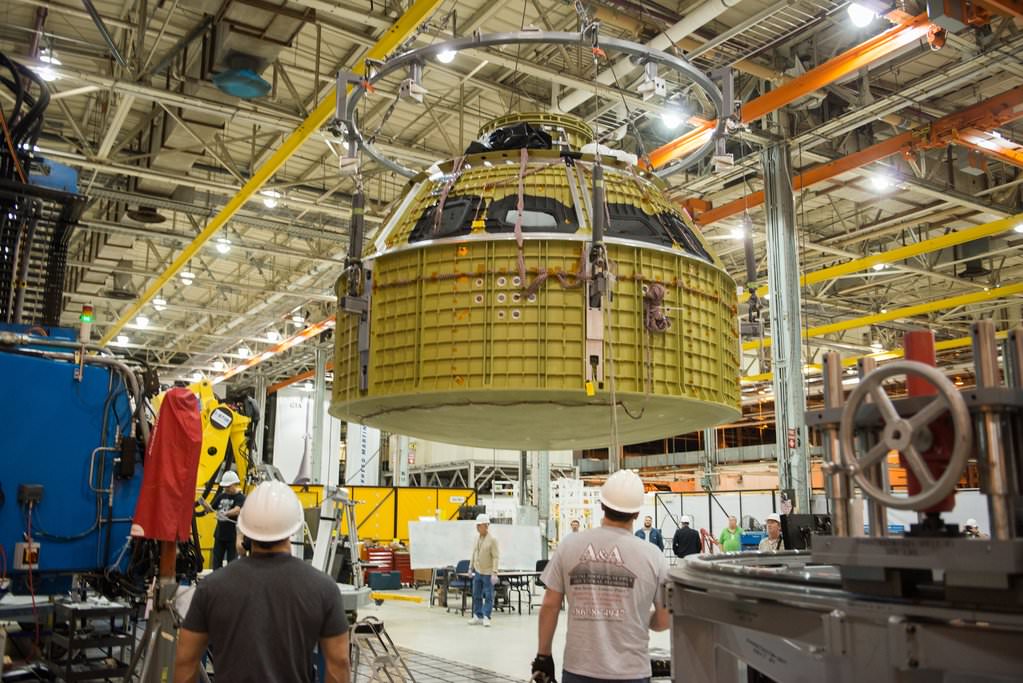
The last of the seven friction-stir welds to assemble the primary structure for NASA’s EM-1 capsule was finished on Jan. 13.
Overall this is the third Orion capsule that NASA has built, following the Ground Test Article (GTA), which did not fly, and the EFT-1 capsule which successfully launched just over one year ago on Dec. 5, 2014.
There have been many lessons learned and over that time. Among the advances are that engineers have reduced the number of welds from 33 to 7. As a result of needing so many fewer welds, the team has saved over 700 pounds of weight which can be directly converted into up mass.
The 2018 launch of NASA’s Orion on an unpiloted flight dubbed Exploration Mission, or EM-1, counts as the first joint flight of SLS and Orion, and the first flight of a human rated spacecraft to deep space since the Apollo Moon landing era ended more than 4 decades ago.
Orion is designed to send astronauts deeper into space than ever before, including missions to the Moon, asteroids and the Red Planet.
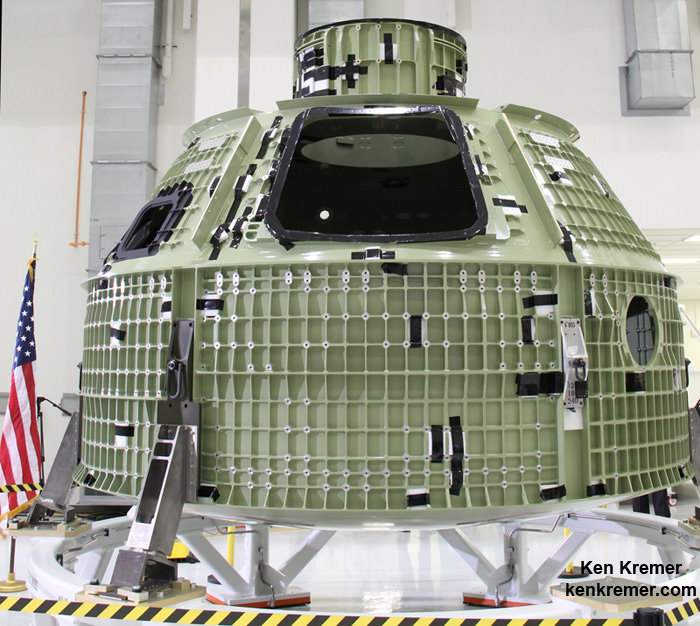
Stay tuned here for Ken’s continuing Earth and Planetary science and human spaceflight news.

